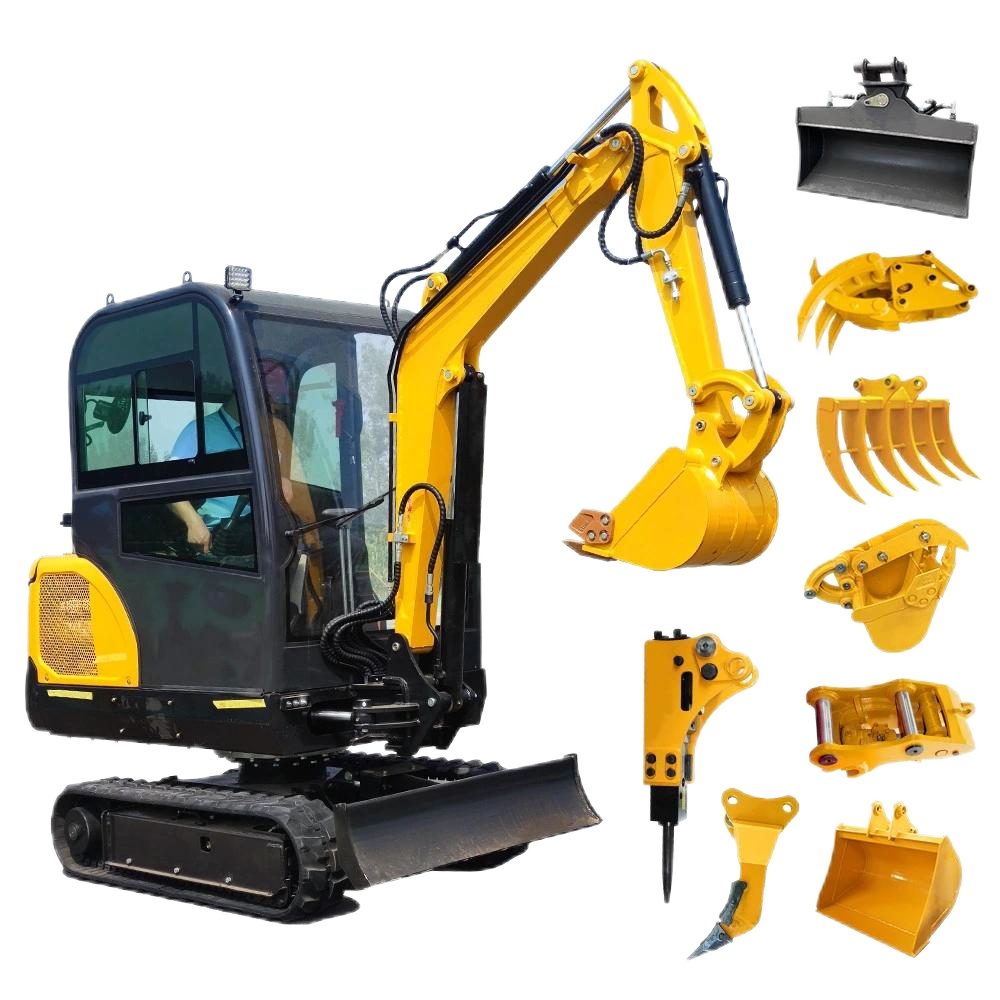In the grand narrative of modern engineering and construction, the excavator undoubtedly takes center stage. This colossal steel machine, combining power, precision, and intelligence, is evolving at an astonishing pace. From traditional earthwork operations to cutting-edge fields such as deep-sea engineering and space exploration, its presence is ubiquitous. Today, let's lift the veil on the excavator and explore the technological secrets and industry trends behind it.

I. From Steam Power to Smart Connectivity: The Evolutionary Epic of Excavators
In 1835, the first steam-driven excavator was born, opening a new chapter in human engineering and construction. Subsequently, the introduction of hydraulic technology brought about a qualitative leap in the strength and flexibility of excavators. In recent years, the deep integration of artificial intelligence and Internet of Things (IoT) technologies has propelled excavators into the intelligent era. Today, top-of-the-line excavators can not only perceive the working environment in real-time through sensors but also achieve remote control via 5G networks and even autonomously plan their operation routes.
Take the new generation of intelligent excavators as an example. The Cat Payload system they are equipped with can weigh excavated materials in real-time with an error rate of less than 1%, significantly enhancing operational efficiency and accuracy. The remotely controlled excavators launched by Komatsu played a crucial role in the aftermath of the Fukushima nuclear accident, making engineering operations in hazardous environments possible.
II. All-Round Warriors: Diverse Application Scenarios of Excavators
The applications of excavators have long transcended the boundaries of traditional infrastructure construction, demonstrating astonishing adaptability across numerous fields:
- Invaluable Assistants for Infrastructure Giants
In large-scale infrastructure projects such as highways, railways, and bridges, excavators are indispensable workhorses. Ultra-large excavators, with a total weight of nearly 950 tons and a bucket capacity of 42 cubic meters, can lift the equivalent of 20 passenger cars in one go, greatly accelerating project progress. - Gentle Scalpels for Urban Renewal
In urban building demolition and renovation, mini excavators and building demolition machines serve as "gentle scalpels" safeguarding urban safety. Mini excavators, with a body width of less than 1 meter, can navigate through narrow alleys with ease. Meanwhile, building demolition machines, through the coordination of telescopic arms and breaker hammers, can precisely demolish high-rise buildings, minimizing the impact on the surrounding environment. - Pioneers in Specialized Fields
In mining operations, mining excavators, with their exceptional durability and digging power, can process tens of thousands of tons of ore daily. In the agricultural sector, excavators equipped with specialized attachments can efficiently perform tasks such as ditch digging and fertilization. Even in deep-sea engineering and space exploration, customized excavators are continuously expanding the frontiers of human engineering.
III. The Future is Here: Three Major Trends in the Excavator Industry
- The Onslaught of the Electrification Wave
With increasingly stringent environmental policies, electric excavators are experiencing explosive growth. Electric excavators operate with zero emissions and low noise, and their maintenance costs are more than 30% lower than those of traditional fuel-powered excavators, making them a new favorite in urban construction. - Intelligence Reimagining the Operational Model
The deep application of AI and big data technologies is making excavators "smarter." Intelligent excavators can optimize operation processes through machine learning, reducing fuel consumption. Construction managers can monitor the equipment's operational status in real-time via cloud platforms, predict potential failures in advance, and significantly improve management efficiency. - Customized Services Becoming the New Standard
To meet the personalized needs of different customers, excavator manufacturers are rolling out customized services. From the flexible selection of attachments to the personalized adjustment of operational parameters and comprehensive equipment management solutions throughout the entire lifecycle, customized services are emerging as a new competitive frontier for enterprises.
IV. Purchase Guide: How to Find Your "Dream Machine"
For engineering professionals, choosing the right excavator is of paramount importance. When making a purchase, consider the following aspects:
- Operation Scenarios: Determine the tonnage and type of excavator based on factors such as the volume of earthwork and the working environment.
- Performance Parameters: Pay close attention to key parameters such as digging force, maximum digging depth, and slewing speed.
- Brand and After-Sales Service: Give preference to brands with a good market reputation and a comprehensive after-sales service network to ensure trouble-free operation of the equipment.
In this era of rapid technological advancements, excavators have long gone beyond the realm of mere construction machinery and have become a vital force driving the progress of human civilization. Whether they are the towering giants striding across vast construction sites or the nimble machines navigating through urban streets, each excavator is writing its own . In the future, with continuous technological innovation, excavators will surely continue to reshape our world with even greater might.





